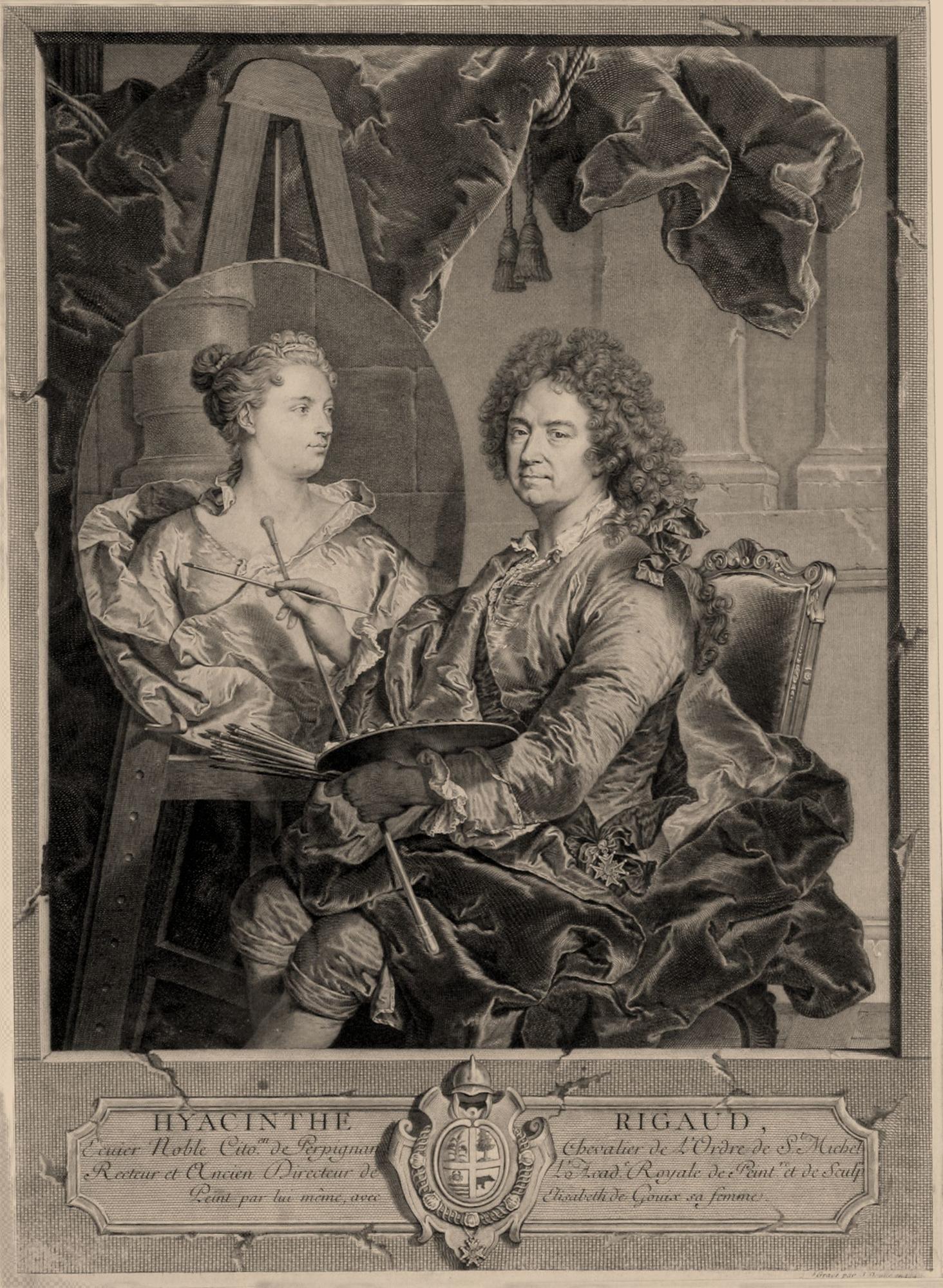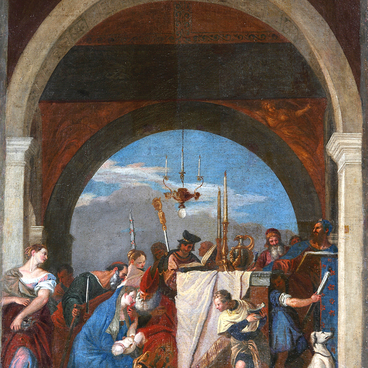The best print by the engraver Jean Daullé is based on the last self-portrait by a court painter and director of the Royal Academy of Painting and Sculpture Hyacinthe Rigaud. In that portrait, Rigaud depicted himself painting a portrait of his wife, Élisabeth de Gouy. It is a very rare subject in his work: Rigaud hardly ever painted women.
At the beginning of the 18th century, French engravers followed the traditions of the previous century: they were allowed to work with paintings approved by the Royal Academy of Painting and Sculpture. It imposed rather strict limitations on the plots: it favored mythology and historical events and also allowed to engrave portraits on copper. By the middle of the 18th century, the highest point in the development of chisel engraving was the baroque ceremonial portrait, and Hyacinthe Rigaud was the artist who supplied the largest number of originals.
At the beginning of the 18th century, French engravers followed the traditions of the previous century: they were allowed to work with paintings approved by the Royal Academy of Painting and Sculpture. It imposed rather strict limitations on the plots: it favored mythology and historical events and also allowed to engrave portraits on copper. By the middle of the 18th century, the highest point in the development of chisel engraving was the baroque ceremonial portrait, and Hyacinthe Rigaud was the artist who supplied the largest number of originals.



